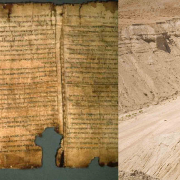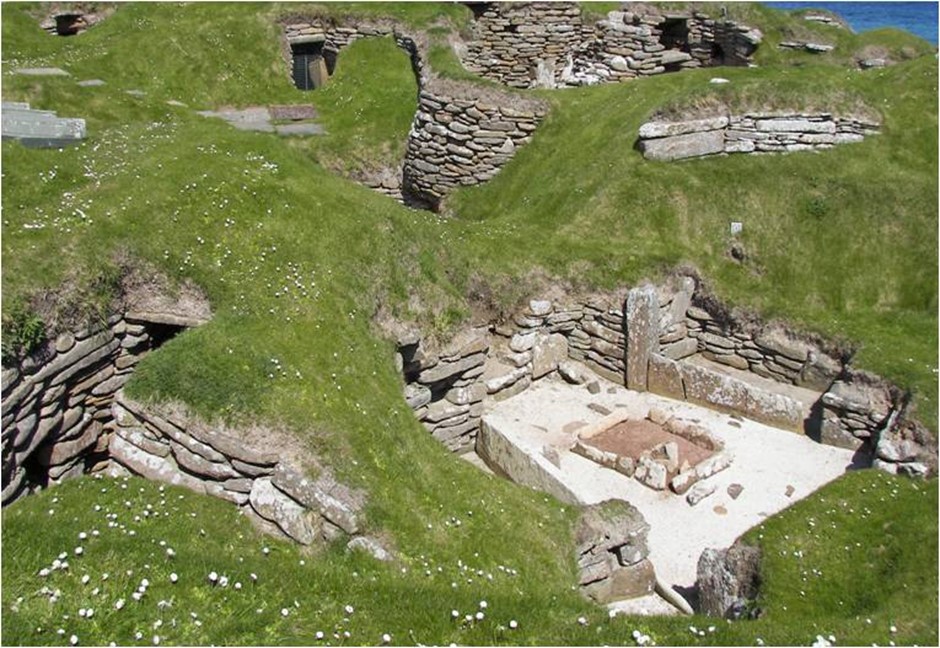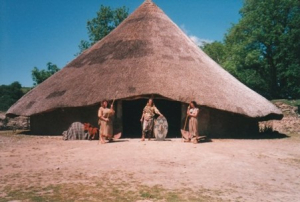HISTORY OF THE BIBLE
HISTORY OF THE BIBLE
History of the Bible Timeline
Trace the History of Scripture from Creation to Current Day Translations
By Mary Fairchild, About.com Guide

Israel Museum in Jerusalem displays part of the Isaiah Scroll, one of the Dead Sea Scrolls.
The Bible is reported to be the biggest bestseller of all time, and its history is fascinating to study. As God’s Spirit breathed on the authors of the Bible, they recorded the messages with whatever resources were available at the time. The Bible itself illustrates some of the materials used: engravings in clay, inscriptions on tablets of stone, ink and papyrus, vellum, parchment, leather and metals.
This timeline traces the unparalleled history of the Bible down through the ages. Discover how God’s Word has been painstakingly preserved, and for extended periods even suppressed, during its long and arduous journey from creation to present day English translations.
History of the Bible Timeline
- Creation – B.C. 2000– Originally, the earliest Scriptures are handed down from generation to generation orally.
- Circa B.C. 2000-1500– The book of Job, perhaps the oldest book of the Bible, is written.
- Circa B.C. 1500-1400– The stone tablets of the Ten Commandments are given to Moses at Mount Sinai and later stored in the Ark of the Covenant.
- Circa B.C. 1400–400– The manuscripts comprising the original Hebrew Bible (39 Old Testament books) are completed. The Book of the Law is kept in the tabernacle and later in the Temple beside the Ark of the Covenant.
- Circa B.C. 300– All of the original Old Testament Hebrew books have been written, collected, and recognized as official, canonical books.
- Circa B.C. 250–200– The Septuagint, a popular Greek translation of the Hebrew Bible (39 Old Testament books), is produced. The 14 books of the Apocrypha are also included.
- Circa A.D. 45–100– Original 27 books of the Greek New Testament are written.
- Circa A.D. 140-150– Marcion of Sinope’s heretical “New Testament” prompted Orthodox Christians to establish a New Testament canon.
- Circa A.D. 200– The Jewish Mishnah, the Oral Torah, is first recorded.
- Circa A.D. 240– Origen compiles the Hexapla, a six-columned parallel of Greek and Hebrew texts.
- Circa A.D. 305-310– Lucian of Antioch’s Greek New Testament text becomes the basis for the Textus Receptus.
- Circa A.D. 312– Codex Vaticanus is possibly among the original 50 copies of the Bible ordered by Emperor Constantine. It is eventually kept in the Vatican Library in Rome.
- A.D. 367– Athanasius of Alexandria identifies the complete New Testament canon (27 books) for the first time.
- A.D. 382-384– Saint Jerome translates the New Testament from original Greek into Latin. This translation becomes part of the Latin Vulgate manuscript.
- A.D. 397– Third Synod of Carthage approves the New Testament canon (27 books).
- A.D. 390-405– Saint Jerome translates the Hebrew Bible into Latin and completes the Latin Vulgate manuscript. It includes the 39 Old Testament books, 27 New Testament books, and 14 Apocrypha books.
- A.D. 500– By now the Scriptures have been translated into multiple languages, not limited to but including an Egyptian version (Codex Alexandrinus), a Coptic version, an Ethiopic translation, a Gothic version (Codex Argentus), and an Armenian version. Some consider the Armenian to be the most beautiful and accurate of all ancient translations.
- A.D. 600– The Roman Catholic Church declares Latin as the only language for Scripture.
- A.D. 680– Caedmon, English poet and monk, renders Bible books and stories into Anglo Saxon poetry and song.
- A.D. 735– Bede, English historian and monk, translates the Gospels into Anglo Saxon.
- A.D. 775– The Book of Kells, a richly decorated manuscript containing the Gospels and other writings, is completed by Celtic monks in Ireland.
- Circa A.D. 865– Saints Cyril and Methodius begin translating the Bible into Old Church Slavonic.
- A.D. 950– The Lindisfarne Gospels manuscript is translated into Old English.
- Circa A.D. 995-1010– Aelfric, an English abbot, translates parts of Scripture into Old English.
- A.D. 1205– Stephen Langton, theology professor and later Archbishop of Canterbury, creates the first chapter divisions in the books of the Bible.
- A.D. 1229– Council of Toulouse strictly forbids and prohibits lay people from owning a Bible.
- A.D. 1240– French Cardinal Hugh of Saint Cher publishes the first Latin Bible with the chapter divisions that still exist today.
- A.D. 1325– English hermit and poet, Richard Rolle de Hampole, and English poet William Shoreham, translate the Psalms into metrical verse.
- Circa A.D. 1330– Rabbi Solomon ben Ismael first places chapter divisions in the margins of the Hebrew Bible.
- A.D. 1381-1382– John Wycliffe and associates, in defiance of the organized Church, believing that people should be permitted to read the Bible in their own language, begin to translate and produce the first handwritten manuscripts of the entire Bible in English. These include the 39 Old Testament books, 27 New Testament books, and 14 Apocrypha books.
- A.D. 1388– John Purvey revises Wycliffe’s Bible.
- A.D. 1415– 31 years after Wycliffe’s death, the Council of Constance charges him with more than 260 counts of heresy.
- A.D. 1428– 44 years after Wycliffe’s death, church officials dig up his bones, burn them, and scatter the ashes on Swift River.
- A.D. 1455– After the invention of the printing press in Germany, Johannes Gutenberg produces the first printed Bible, the Gutenberg Bible, in the Latin Vulgate.
- A.D. 1516– Desiderius Erasmus produces a Greek New Testament, forerunner to the Textus Receptus.
- A.D. 1517– Daniel Bomberg’s Rabbinic Bible contains the first printed Hebrew version (Masoretic text) with chapter divisions.
- A.D. 1522– Martin Luther translates and publishes the New Testament for the first time into German from the 1516 Erasmus version.
- A.D. 1524– Bomberg prints a second edition Masoretic text prepared by Jacob ben Chayim.
- A.D. 1525– William Tyndale produces the first translation of the New Testament from Greek into English.
- A.D. 1527– Erasmus publishes a fourth edition Greek-Latin translation.
- A.D. 1530– Jacques Lefèvre d’Étaples completes the first French language translation of the entire Bible.
- A.D. 1535– Myles Coverdale’s Bible completes Tyndale’s work, producing the first complete printed Bible in the English language. It includes the 39 Old Testament books, 27 New Testament books, and 14 Apocrypha books.
- A.D. 1536– Martin Luther translates the Old Testament into the commonly-spoken dialect of the German people, completing his translation of the entire Bible in German.
- A.D. 1536– Tyndale is condemned as a heretic, strangled, and burned at the stake.
- A.D. 1537– The Matthew Bible (commonly known as the Matthew-Tyndale Bible), a second complete printed English translation, is published, combining the works of Tyndale, Coverdale and John Rogers.
- A.D. 1539– The Great Bible, the first English Bible authorized for public use, is printed.
- A.D. 1546– Roman Catholic Council of Trent declares the Vulgate as the exclusive Latin authority for the Bible.
- A.D. 1553– Robert Estienne publishes a French Bible with chapter and verse divisions. This system of numbering becomes widely accepted and is still found in most Bible’s today.
- A.D. 1560– The Geneva Bible is printed in Geneva, Switzerland. It is translated by English refugees and published by John Calvin‘s brother-in-law, William Whittingham. The Geneva Bible is the first English Bible to add numbered verses to the chapters. It becomes the Bible of the Protestant Reformation, more popular than the 1611 King James Version for decades after its original release.
- A.D. 1568– The Bishop’s Bible, a revision of the Great Bible, is introduced in England to compete with the popular but “inflammatory toward the institutional Church” Geneva Bible.
- A.D. 1582– Dropping its 1,000-year-old Latin only policy, the Church of Rome produces the first English Catholic Bible, the Rheims New Testament, from the Latin Vulgate.
- A.D. 1592– The Clementine Vulgate (authorized by Pope Clementine VIII), a revised version of the Latin Vulgate, becomes the authoritative Bible of the Catholic Church.
- A.D. 1609– The Douay Old Testament is translated into English by the Church of Rome, to complete the combined Douay-Rheims Version.
- A.D. 1611– The King James Version, also called the “Authorized Version” of the Bible is published. It is said to be the most printed book in the history of the world, with more than one billion copies in print.
- A.D. 1663– John Eliot’s Algonquin Bible is the first Bible printed in America, not in English, but in the native Algonquin Indian language.
- A.D. 1782– Robert Aitken’s Bible is the first English language (KJV) Bible printed in America.
- A.D. 1790– Matthew Carey publishes a Roman Catholic Douay-Rheims Version English Bible in America.
- A.D. 1790– William Young prints the first pocket sized “school edition” King James Version Bible in America.
- A.D. 1791– The Isaac Collins Bible, the first family Bible (KJV), is printed in America.
- A.D. 1791– Isaiah Thomas prints the first illustrated Bible (KJV) in America.
- A.D. 1808– Jane Aitken (daughter of Robert Aitken), is the first woman to print a Bible.
- A.D. 1833– Noah Webster, after publishing his famous dictionary, releases his own revised edition of the King James Bible.
- A.D. 1841– The English Hexapla New Testament, a comparison of the original Greek language and six important English translations, is produced.
- A.D. 1844– The Codex Sinaiticus, a hand written Koine Greek manuscript of both Old and New Testament texts dating back to the fourth century, is rediscovered by German Bible scholar Konstantin Von Tischendorf in the Monastery of Saint Catherine on Mount Sinai.
- A.D. 1881-1885– The King James Bible is revised and published as the Revised Version (RV) in England.
- A.D. 1901– The American Standard Version, the first major American revision of the King James Version, is published.
- A.D. 1946-1952– The Revised Standard Version is published.
- A.D. 1947-1956– The Dead Sea Scrolls are discovered.
- A.D. 1971– The New American Standard Bible (NASB) is published.
- A.D. 1973– The New International Version (NIV) is published.
- A.D. 1982– The New King James Version (NKJV) is published.
- A.D. 1986– The discovery of the Silver Scrolls, believed to be the oldest Bible text ever, is announced. They were found three years earlier in the Old City of Jerusalem by Gabriel Barkay of Tel Aviv University.
- A.D. 1996– The New Living Translation (NLT) is published.
- A.D. 2001– The English Standard Version (ESV) is published.
(Sources: Willmington’s Bible handbook; www.greatsite.com; Crossway; Bible Museum; Biblica; Christianity Today; and Theopedia.)
![]()




 The Stone Age lasted until about 3,000 BC. In biblical history these dates relate to the time of Adam and Eve right through to the birth of Noah.
The Stone Age lasted until about 3,000 BC. In biblical history these dates relate to the time of Adam and Eve right through to the birth of Noah.
 The last of these three Ages lasted from about 1,200 BC to 586 BC. This time period takes us from the start of the kings of Israel through to their last king, and the subsequent captivity in Babylon. It includes much of Israel’s history and a large proportion of their writings, the Kings and Chronicles, Psalms and Prophets. It should be understood that the Psalms and prophetic books fit in alongside the history of their kings, so that the two sections run in parallel. The principal Bible events under the Iron Age cover:
The last of these three Ages lasted from about 1,200 BC to 586 BC. This time period takes us from the start of the kings of Israel through to their last king, and the subsequent captivity in Babylon. It includes much of Israel’s history and a large proportion of their writings, the Kings and Chronicles, Psalms and Prophets. It should be understood that the Psalms and prophetic books fit in alongside the history of their kings, so that the two sections run in parallel. The principal Bible events under the Iron Age cover: